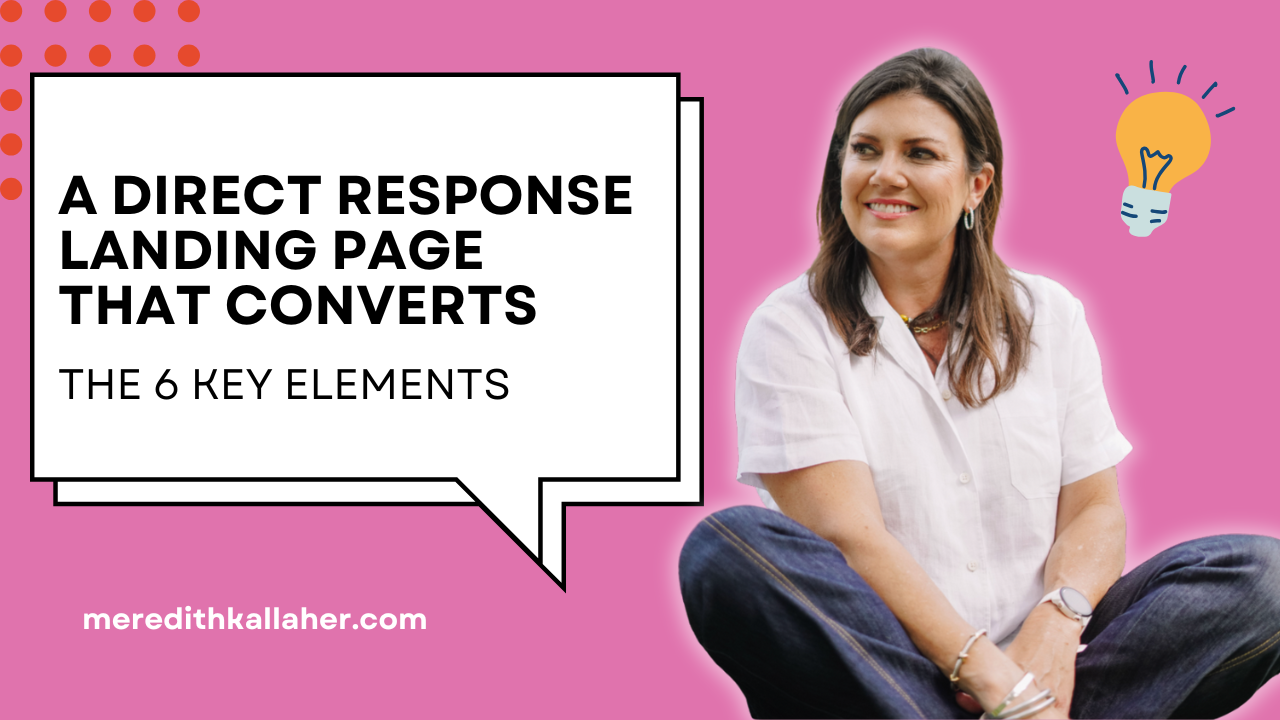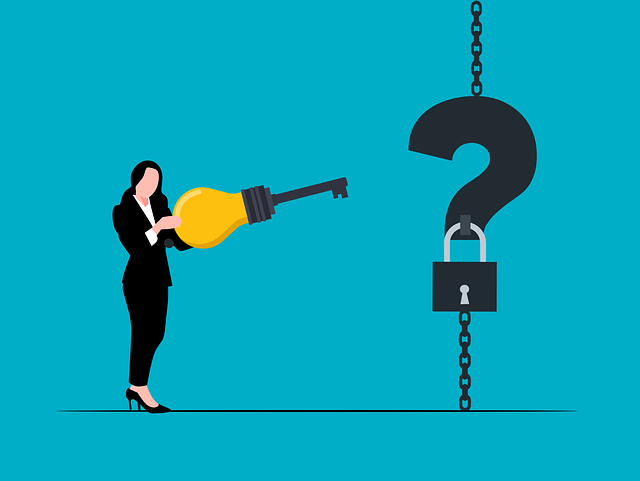
Want More Leads? Start Here.
If you’re running Facebook and Instagram ads to grow your email list, your direct response landing page is the make-or-break moment. It’s the bridge between a curious click and a valuable lead—so getting it right is non-negotiable.
A high-converting landing page doesn’t just collect emails; it tells a story that positions your audience as the hero, solves their problem, and compels them to take action.
Today, we’re diving into the six essential elements of a direct response landing page that turns cold traffic into warm leads (and, ultimately, paying customers). Plus, I’ll share how to monitor key stats using heat mapping software so you can optimize your results.
Let’s build a landing page that works.

What is a Direct Response Landing Page?
Definition and Purpose
A direct response landing page is a specialized web page designed to prompt visitors to take a specific action, such as making a purchase, signing up for a newsletter, or downloading a resource. Unlike general landing pages that might serve multiple purposes, a direct response landing page has a singular focus: to convert visitors into leads or customers. This is achieved by presenting a clear and compelling offer, highlighting the benefits and value of the product or service, and encouraging visitors to take immediate action.
Importance in a Freebie Funnel
In the context of a freebie funnel, a direct response landing page is a critical component. It serves as the gateway where potential customers are first introduced to your offer. By providing a valuable free resource—like an ebook, checklist, or webinar—you can attract and capture leads. The direct response landing page must be well-designed to build trust and establish credibility right from the start. This initial interaction sets the tone for the rest of the funnel, guiding visitors through a series of targeted offers that ultimately lead to a sale. A high-converting landing page is essential for this process, as it persuades visitors to take the desired action, thereby moving them further down the funnel.
1. A Headline That Stops the Scroll and Speaks to Your Audience
Your headline is your first impression and your biggest hook. It has one job: to make your visitor think, “Yes! This is exactly what I need.”
-
Address common pain points: A great headline should immediately resonate with your audience by addressing their common pain points. This connection can be achieved through storytelling and relatable experiences, making them feel understood and more likely to engage with your content.
A great headline should:
-
Clearly state the benefit of your freebie.
-
Acknowledge a struggle or pain point your audience faces.
-
Create urgency so they take action now.
Example:
❌ “Download My Free Ebook” (too vague!)
✅ “Unlock [Desired Outcome] Without [Common Pain Point]: Grab Your Free [Freebie Name] Now!”
Actionable Tip:
Brainstorm at least 10 headlines and test different versions using your ad data or a landing page software that allows you to test small changes/tweaks you make to the page. We love Unbounce that allows users to easily create page variants to test different versions of a landing page. It honestly makes testing so easy-peasy!

2. A Clear and Compelling Value Proposition (What’s In It for Them?)
People don’t want another freebie—they want a solution. Your landing page must instantly answer:
“Why should I care?”
Your value proposition should be clear, concise, and benefit-driven, effectively communicating the unique selling proposition of your product or service.
Focus on:
-
Specific, tangible results (not just “information”).
-
Transformation (how will their life or business improve?).
-
A simple, compelling promise.
Example:
"This free [Freebie Type] will teach you how to [Specific Skill] so you can [Desired Outcome] in just [Timeframe]."
Actionable Tip:
Use bullet points to highlight the key benefits so visitors can skim and see instant value.

3. A Visually Appealing, Story-Driven Design
Your landing page isn’t just words—it’s an experience. A compelling hero image at the top of the page can effectively capture attention and set the tone for your message. The design should reinforce your story and guide visitors to take action.
Key design elements of a high-converting landing page:
-
Professional, clean layout (no clutter!).
-
High-quality images or videos that create trust and credibility.
-
Consistent branding (colors, fonts, and visuals that align with your brand).
-
Mobile-responsive design (over 50% of traffic is mobile!).
-
Plenty of white space for readability.
Bonus Storytelling Tip:
Use StoryBrand principles to position your audience as the hero and your freebie as the tool that helps them win.
Instead of just saying “Download this guide,” frame it as:
"You’ve struggled with [pain point], but now you have a solution. Here’s what happens when you grab this free resource…"
Actionable Tip:
Use heat mapping software to see where people click, scroll, or drop off—so you can refine your page’s layout and messaging.
4. A Powerful, Friction-Free Opt-In Form
If you make people work too hard to sign up, they won’t. Simplicity wins.
Best practices for high-converting opt-in forms:
-
Ask for the bare minimum (usually just name + email).
-
Use an action-driven CTA button (e.g., “Send Me the Guide” instead of “Submit”).
-
Ensure your form stands out (use contrast and spacing to make it obvious).
Example CTA Button Copy:
❌ “Sign Up” (boring!)
✅ “Yes! I Want Instant Access” (engaging!).
Actionable Tip:
Test different CTA button colors and wording to see what drives the most sign-ups.
5. Social Proof and Credibility
Role in Building Trust
Building trust with potential customers is paramount, and this is where social proof and credibility come into play. Social proof involves showcasing customer testimonials, reviews, and ratings to demonstrate the effectiveness and quality of your product or service. Credibility, on the other hand, is about establishing your business’s authority and expertise in your industry. When integrated into a direct response landing page, these elements can significantly enhance the perceived value of your offer, reduce perceived risk, and drive more conversions.
Incorporating social proof and credibility into your landing page can be done through various means:
-
Customer Testimonials and Reviews: Real feedback from satisfied customers can be incredibly persuasive.
-
Video Testimonials and Case Studies: These provide a more personal and detailed account of customer experiences.
-
Industry Certifications and Awards: Displaying these can bolster your authority and trustworthiness.
-
Trust Badges and Security Seals: These reassure visitors about the safety and reliability of your site.
-
Expert Endorsements and Partnerships: Endorsements from industry experts or partnerships with reputable organizations can further enhance credibility.
By strategically including these elements, you can create a landing page that resonates with your target audience, builds trust, and ultimately increases the likelihood of conversion.

6. A Strategic Thank You Page (with a Next Step)
Don’t waste your thank you page! The second someone opts in is the moment they’re most engaged. But that doesn’t always mean they’re ready to make a significant investment—especially if they just met you.
Your thank you page should include:
-
A clear confirmation (“Check your inbox for your freebie!”).
-
Instructions on what to do next (e.g., check spam, whitelist your email).
-
A secondary call-to-action (e.g., “Join our private Facebook group” or “Follow us on Instagram”).
-
An optional upsell (e.g., a limited-time discount on a related product or service).
Should You Sell on the Thank You Page?
It depends. If your offer is low-ticket ($27-$97), testing an upsell right away can work. But if it’s a higher investment, building trust first might be the smarter move.
👉 Case Study: One of my clients was selling a $600 workshop and initially considered offering it on the thank you page. But instead, we tested a softer call-to-action—an invitation to follow them on Instagram. Over six weeks, their Instagram following grew by 30%, and we nurtured those new followers through organic content and DMs. When we later sold the workshop via email, the campaign generated $56,000 on a $4,000 ad spend.
💡 The takeaway? If you’re committed to engaging on social media, growing your audience first can warm up your leads and increase conversions later.
Actionable Tip:
Use heat mapping software to track engagement on your thank you page and see how many people click your CTA vs. bounce. If your direct upsell isn’t converting, test a relationship-building step first—like a social media invite or a free mini-training.
Ready to Build a Direct Response Landing Page That Converts?
A great landing page isn’t magic—it’s strategy. By focusing on these six key elements, you can increase conversions, grow your email list, and turn leads into paying customers.
Meredith Kallaher helps small business owners Expand Their Reach and Explode Their Sales with
Facebook and Instagram Advertising Strategy and Management.
Learn How Meredith Can Help You Build Your Business and Exceed Your Sales Goals. Book a FREE DISCOVERY CALL Today.
I’m Meredith
We create BIG value for business owners by connecting them with their ideal customers and clients using creative, strategic and authentic digital advertisements.